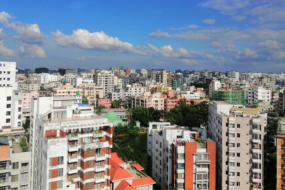The alternate asset class of fractional ownership is on a new high. Largely driven by Grade A office assets, feactional real estate market is set to top USD 5 billion by 2030.
The Indian fractional ownership market is currently estimated at around USD 500 million and is expected to grow 10 times in the next 5 years. Albeit the regulatory compliance issues that the industry is expected to witness during the initial phase of implementation of the MSM REIT regulations, these are expected to pave the way for the market to grow and potentially surpass USD 5.0 billion of Asset Under Management (AUM) by 2030.
A JLL- PropShare report highlights the immense growth potential of the real estate fractional ownership market in India. The analysis examined Grade A office assets across the top seven (Mumbai, Delhi NCR, Kolkata, Chennai, Bengaluru, Pune, and Hyderabad) markets of India shedding light on the potential size and expected growth trajectory of the market.
Traditionally, real estate investment has required a substantial amount of capital. Given high capital requirements and lack of liquidity, investment especially in commercial real estate, was limited to institutional investors or individuals with significant financial resources. However, the emergence of REITs and Fractional Ownership Platforms (FOPs) have transformed the real estate investment landscape. These innovative platforms have democratised access to real estate for retail investors and provide opportunities for investors to diversify their investment portfolios by accessing asset classes that were previously exclusive.
“The current fractional ownership market is estimated at USD 500 million based on value of assets under management. However, our analysis reveals significant prospects for growth. More than 328 million sq. ft of grade A office assets in the top seven cities of India, valued at USD 48 billion are MSM REIT-worthy. This shows the promise and future potential of this sector. The REIT market in India grew from Rs 0.3 trillion to Rs 1.3 trillion in Gross Asset Value (GAV) within a span of five years. As the regulatory framework falls into place and FOPs overcome initial implementation obstacles, we expect the MSME REIT market to experience an even more accelerated pace of growth”, says Dr Samantak Das, Chief Economist and Head of Research and REIS, India, JLL ”
Small and Medium REITs: Fostering Growth with Regulatory Oversight
To formalise the nascent fractional ownership space, the Securities and Exchange Board of India (SEBI) has the Small and Medium Real Estate Investment Trusts (SM REITs). Amendments to the REIT Regulations 2014 enable the formation of SM REITs, addressing concerns regarding regulatory oversight in FOPs.
Prior to the SM REITs regulations, regulatory oversight of FOPs was mostly ambiguous or absent and with rising investor interest it raised concerns on lack of uniformity in disclosure standards, lack of transparency in valuation, management fees, maintenance costs, redressal of investor grievances. The notified regulations require registration of all FOPs with SEBI under the REIT regulations. With all schemes listed on stock exchanges, open market transactions will lead to more transparency, better investor protection and making exits easier for investors, truly democratizing the investment play in Indian real estate.
Key aspects of the SM REITs Regulations
The regulations address key aspects to safeguard investor interests, and to ensure organized growth of the market. First, it requires the investment manager responsible for setting up an SM REIT to have a net worth of at least Rs 20 crore and at least two years experience in the real estate industry or real estate fund management. Also, in the SM REIT scheme which has opted not to undertake leverage, the investment manager shall always hold at least 5 per cent of the total outstanding units during the first three years. The minimum holding increases to 15 per cent in the case of leveraged schemes. Secondly, SM REIT schemes are not allowed to invest in under-construction or non-revenue generating real estate assets. At least 95 percent of the value of the schemes’ assets must be invested in completed and revenue generating properties and the remaining 5% can be invested in ‘unencumbered’ liquid assets. Third, the size of the asset to be acquired in a SM REIT scheme should be at least INR 50 crore and less than INR 500 crore with units to be issued to a minimum of 200 investors.
The SM REIT regulations have lower entry barriers and have the potential to bring many income-generating small and medium real estate assets under the purview of REITs, thereby providing a new funding avenue for them to raise capital. Additionally, it is expected to act as a catalyst in enhancing transparency and market efficiency, thereby boosting the participation of domestic as well as foreign retail investors and increasing liquidity in the Indian real estate market.
“As the first and largest platform, PropShare was a pioneer in establishing the FOP market in India. When we started PropShare, our aim was to make institutional quality real estate accessible to a larger audience of sophisticated investors. With MSME REIT regulations, SEBI is now formally bringing this growing market into the regulatory ambit, which should lead to significant growth in this asset class while at the same time ensuring investors get the benefits that come with regulation – uniformity, fairness, transparency, and redressal mechanisms”, says Kunal Moktan, CEO, PropShare.
Fueled by technological advancements and growing investor interest in alternative investment avenues, the FOP market in India is witnessing rapid growth. These platforms leverage online platforms and digital solutions to streamline the investment process, making it more accessible and user-friendly for a wider audience.
Fractional Ownership Platforms Demystified
Fractional ownership, as the name suggests, empowers investors to own a fraction or share of a property, effectively lowering the entry barrier and enabling a diverse range of investors to participate. Fractional Ownership Platforms act as facilitators, streamlining the fractional ownership process. They provide a formal channel that enables retail investors to tap into primarily pre-leased commercial real estate including office spaces, warehouses, or even shopping malls (with office spaces currently dominating the market), at a fraction of the total cost. The cost of acquisition is split among several investors, who invest in securities issued by a Special Purpose Vehicle (SPV) established by the FOP. The investors earn returns in the form of rentals as well as long-term value appreciation of the property, with distributions made post deduction of management fees and other maintenance expenses. Over the past few years, web-based platforms offering fractional ownership of real estate assets have proliferated, attracting a growing number of investors. However, a critical aspect remained unaddressed – regulatory oversight.
Looking Ahead
Fractional ownership, with its inherent advantages of affordability, diversification, and potential for appreciation, is poised to become a mainstream investment option in India. As fractional ownership platforms continue to evolve in India, it is essential to focus on educating investors and stakeholders about this investment model. Efforts must also be made to enhance digital infrastructure and foster collaboration between FOPs, developers, and regulatory bodies.
Moreover, addressing the regulatory aspects will ensure a well-defined and secure environment, allowing the sector to flourish and empower individuals, regardless of their investment capacity, in order to participate in the real estate market in an institutional manner. In conjunction with REITs, SM REITs are set to accelerate the journey of India’s real estate sector towards becoming more organized and institutionalized. This, in turn, will fuel the growth and development of the real estate sector, creating a win-win situation for investors, asset owners, and the economy.



